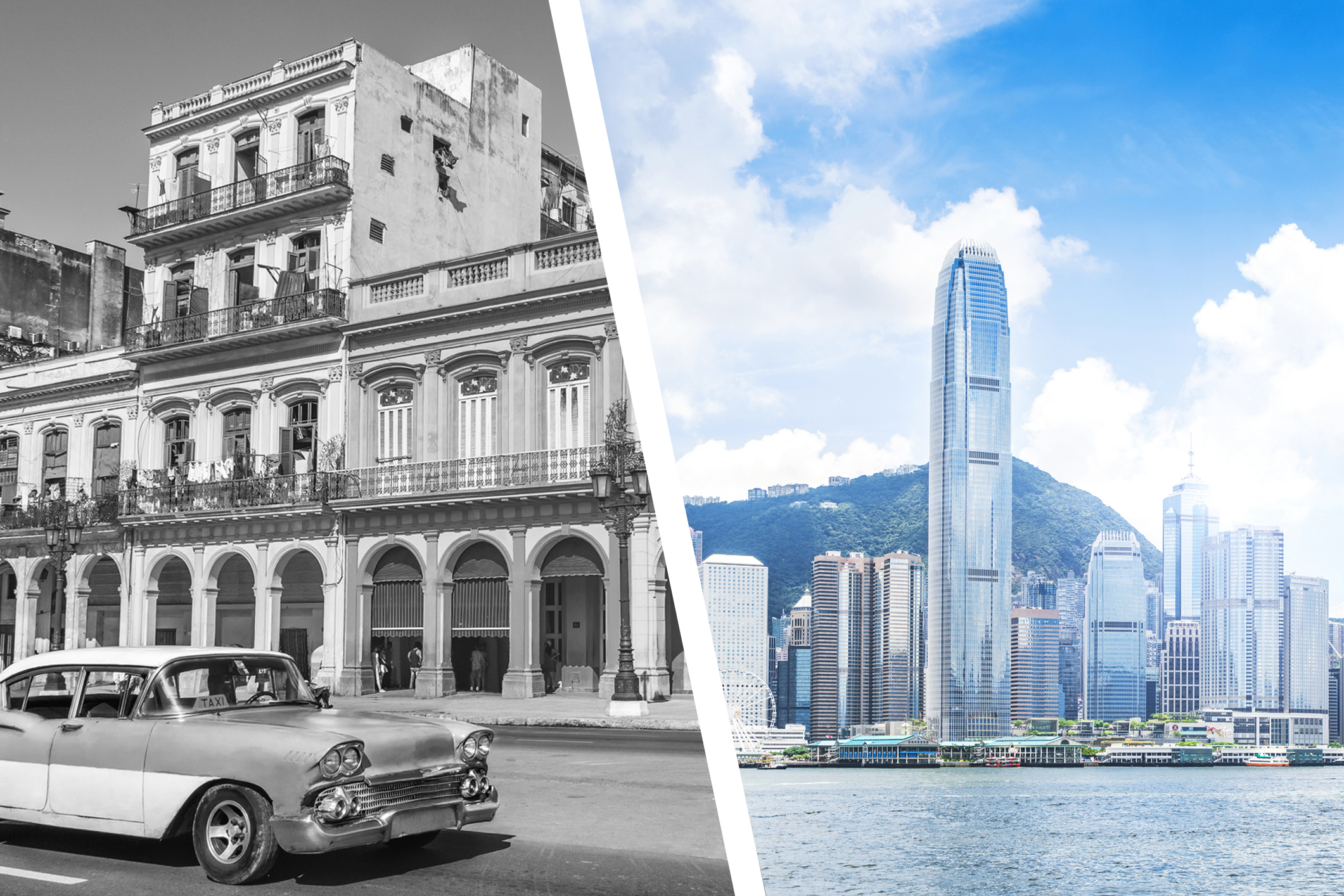As World War II drew to a close, few visitors to Hong Kong would have predicted that this “barren island” would be the setting for one of the most impressive surges of human progress that the world has yet seen. Four years of Japanese occupation had more than halved the population, left factories stripped bare, and ended normal commercial activity.
Although a British colony, the mother-country had no resources to provide any meaningful financial support. All it could offer was the rule or law, good governance, and a willingness to get out of the way of those people who were trying to rebuild their businesses.
Happily, that was enough, and the people of Hong Kong quickly re-established the entrepôt trade with China. The population rebounded and incomes per capita rose back to their pre-war level of around $4,000 per annum (in 2018 PPP adjusted dollars).
But just as stability returned, the United States imposed a total ban on Sino-American trade as Mao’s communist China entered the Korean War. The dominant entrepôt trade collapsed, and one visiting American journalist could, once-more, describe Hong Kong as a “dying city.”
Instead, textile activity surged. In 1949-50, Hong Kong provided a home to textile entrepreneurs fleeing communist China and alongside local entrepreneurs they established 1,400 textile factories employing 80,000 people. By 1970, 17,000 factories directly employed 600,000 workers.
That provoked stiff opposition from the supposedly free-trade United Kingdom and United States as imports undermined the two countries’ uncompetitive domestic industries. Prime Minister Macmillan and President Kennedy attempted to limit Hong Kong’s exports. With impediments to growth in their two key export markets, leaders in Hong Kong debated whether to abandon their previous laissez-faire capitalist policies in favor of the regulation and planning that was common elsewhere.
Fortuitously, the key policymaker was John Cowperthwaite, Financial Secretary between 1961 and 1971. He had championed the laissez-faire approach since he arrived in Hong Kong in 1945. When in charge of Hong Kong’s Department of Supplies, Trade and Industry in the immediate post-war period, he had learned how dynamic capitalism could be, and how difficult it was for government to outperform commercial companies in competitive markets. Having then spent a decade as Deputy Financial Secretary, no-one was more knowledgeable about Hong Kong’s economic policy than him. A student of classical economics, especially the Scottish economist Adam Smith, he did not take long to confirm that Hong Kong would not turn away from its free-market, capitalist, open laissez-faire economy.
So, for over six decades Hong Kong has pursued a policy of “positive non-interventionism,” which Cowperthwaite’s successor described as “taking the view that it is normally futile and damaging to the growth rate of an economy for the government to attempt to plan the allocation of resources available to the private sector and to frustrate market forces, no matter how uncomfortable may be their short term consequences.”
Cowperthwaite’s policy was not non-interventionism, as some have alleged. He limited and regulated monopolies, fought corruption and collusion, learnt to restrict unsafe banking practices, and intervened where he thought he saw market failure, most notably in the provision of low-cost housing. Rather, Cowperthwaite believed that human progress would best be served by a skeptical stance toward proposed government intervention.
It required constant vigilance not to drift into economic activism. At one point, for example, commentators forecast calamity as Hong Kong was forced to accept quotas on the export of natural cotton to the United States and Britain. In fact, industrialists quickly moved to more value-added cotton products and to clothing. As competition and export restrictions slowed that kind of growth, industrialists moved into synthetic fibers.
As those sectors declined, rather than the economy stalling, new sectors such as plastic toys and flowers blossomed. As those sectors wilted, electronic assembly and radios produced even better paid jobs. And so, trusting in market solutions was vindicated. Growth continued, with resources shifting between manufacturing sectors, and then through ever more complex and value-added services to create the advanced economy that is apparent from the gleaming skyline of today’s Hong Kong.
A belief that low taxation would maximize investment and growth, combined with prudent fiscal policy, meant that social provision followed rather than preceded economic success. But follow it did. Life expectancy is up from 63 in 1950 to 85 today, the highest in the world. In 1950, an American could expect to live five years longer than someone from Hong Kong. Now it is five years less. In 2018, the PISA survey ranked Hong Kong as 4th in reading, 4th in math, and 9th in science. The United States placed 13th, 37th, and 18th respectively. The number of students studying for first degrees rose from 700 in 1950 (with half studying medicine) to over 100,000 today. In two generations GDP per capita has risen from below $4,500 in 1950 to $64,000 in 2018, thus illustrating the power of compounding at 4 percent growth for two generations. In 1950, Hong Kong’s GDP per capita was around one third of Britain’s; now it is 40 percent higher.
These are uncertain times for Hong Kong. However, whatever the future may hold for Hong Kong, the period since World War II should receive more attention than it does. It is perhaps the best example of policies delivering human progress and prosperity that we have seen to date.
More from this series:


